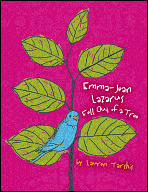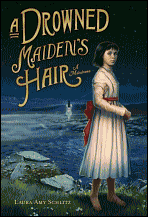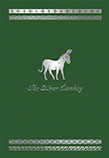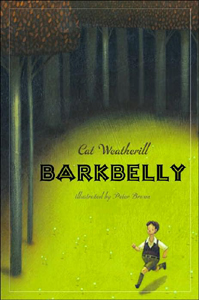Note on Blogger Interview and
Middle-Grade Books Round-Up, Part Two
 Monday, April 23rd, 2007
Monday, April 23rd, 2007
{Note: Sorry there’s no blogger interview today. Yes, we tend to feature those on Mondays. We promise to continue our ongoing discussion with The Blue Rose Girls as soon as possible — most likely, another day later this week — and, after that, with a lot more bloggers with whom we want to chat. For now, enjoy a book review — uh, “recommendation” or whatever it is we’re supposed to call them in the wake of the discussion Roger started. I say that with no snarkiness, by the way} . . .
Eisha and I began a Middle-Grade Books round-up last week (it’s here if you missed the scrotrageous fun we had writing it), and so here I am to do a Part Two of some more middle-graders I’ve read. I intended to write about four — yes, count them, four — titles in this post, but I started with the first title on my list and found myself writing, ahem, a bit more than I’d expected. So, I’ll continue with the other stack of middle-grade novels in a little while. For now, make way for The One. The Only. Emma-Jean Lazarus:

by Lauren Tarshis
Dial Books for Young ReadersMarch 2007
(library copy)
I just had to pick up a copy of Emma-Jean; my curiosity was piqued with all the blog buzz about the book (see here, here, here, and here). This — Lauren Tarshis’ first novel — could be a case study in children’s lit classes for the examination of voice used successfully in a novel — particularly, chapter one, exactly where heavy use of voice should reside as we meet our characters. The protagonist, Emma-Jean, has quite the distinctive style and manner of expression. I guess there are arguments goin’ around for her being autistic, but I don’t buy that. Now onwards and upwards then . . .
Middle-schooler Emma-Jean Lazarus doesn’t like messy, disorderly things like emotions and, quite frankly, friendship — except for with her mother, the doctoral student who is a boarder in their home, the school janitor, and her pet parrot (all believably-drawn secondary characters, I might add in approbation). She’s wicked smart and terribly aloof, a classic misfit. She makes it “her habit to keep herself separate, to observe from afar . . . She maintained a general policy of staying out of the messy lives of her fellow seventh graders.” She’d rather stand on the perimeter of everyone else’s illogical, irrational lives, thanks very much — not unlike a super sharp tween-aged social anthropologist at work: Read the rest of this entry �

 {Big ‘Ol Friendly Warning: Spoilers included. As usual, our co-reviews are really more well-suited to folks who have already read the novel and want to think further on it and, we hope, join in the conversation via the comments function} . . .
{Big ‘Ol Friendly Warning: Spoilers included. As usual, our co-reviews are really more well-suited to folks who have already read the novel and want to think further on it and, we hope, join in the conversation via the comments function} . . .
 Knock. Knock . . . Who’s there?
Knock. Knock . . . Who’s there?  Donkeys might have a long history of being symbols of ignorance, but in Sonya Hartnett’s
Donkeys might have a long history of being symbols of ignorance, but in Sonya Hartnett’s 
 I have Kelly at
I have Kelly at  Fellow Kid-Lit colleagues, I need a little help. I am the Childrens/YA Librarian in a smallish public branch library. I have a 9-year-old female patron who keeps asking me for “romance” books. But without S-E-X, of course – seriously, she explicitly stated this. Like I was about to hand over an Elizabeth Lowell novel. But I digress…
Fellow Kid-Lit colleagues, I need a little help. I am the Childrens/YA Librarian in a smallish public branch library. I have a 9-year-old female patron who keeps asking me for “romance” books. But without S-E-X, of course – seriously, she explicitly stated this. Like I was about to hand over an Elizabeth Lowell novel. But I digress… Today I gave her
Today I gave her  Here’s a little gem for you:
Here’s a little gem for you: 
